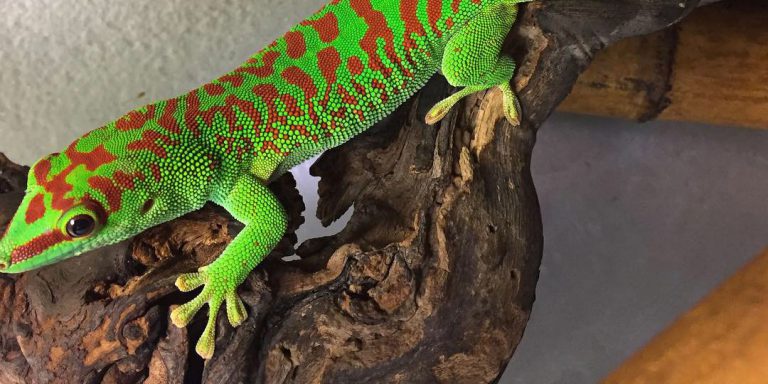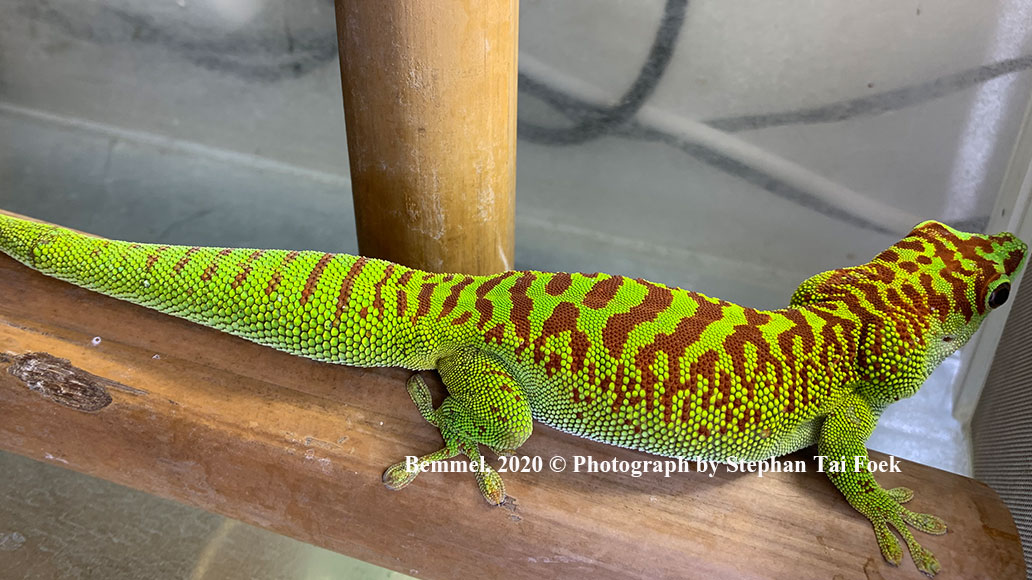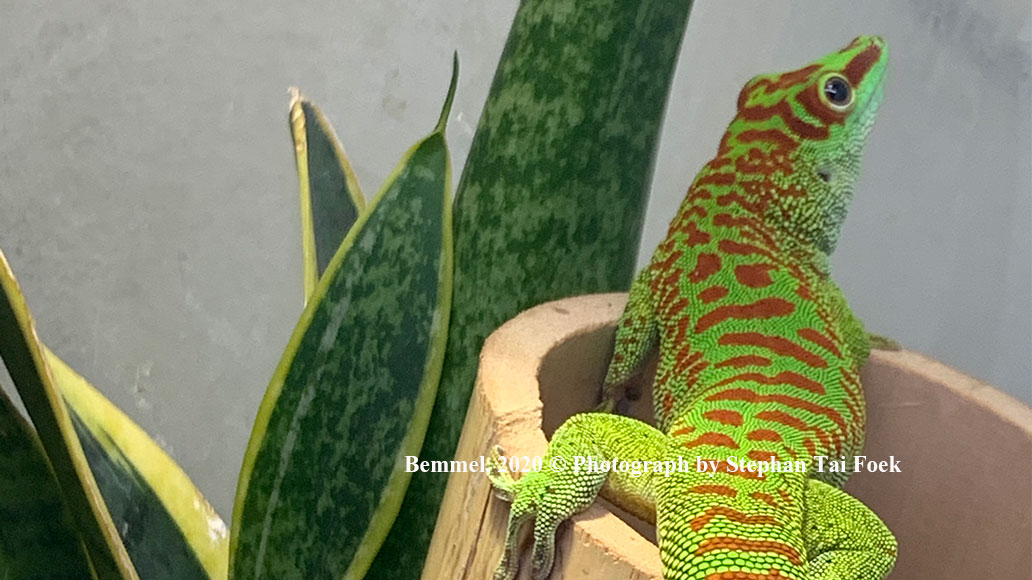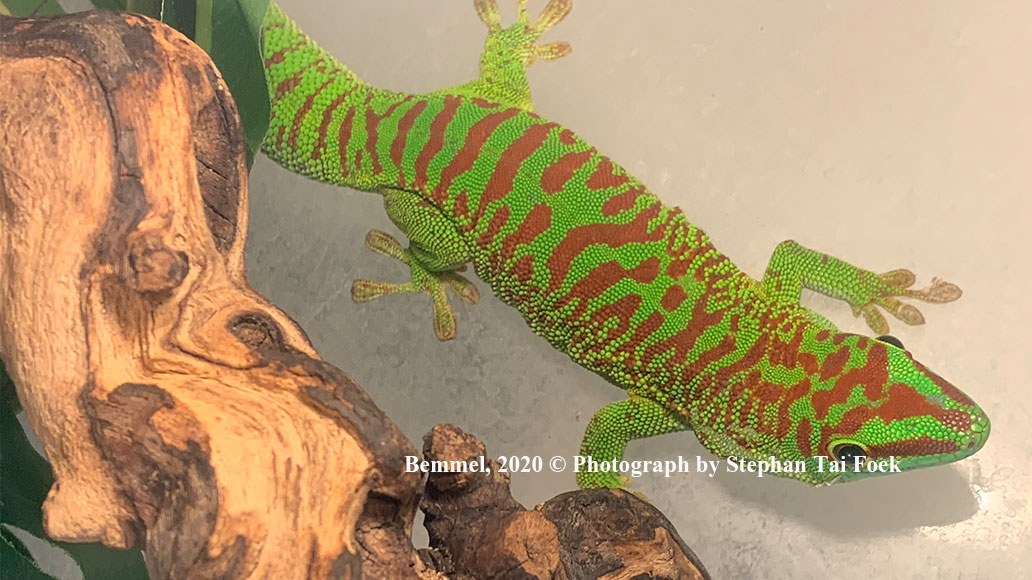Phelsuma grandis English name: Giant Day Gekko

Caresheet
Caresheet
This species is widely distributed in northern and northwest Madagascar. There are a few recorded populations of this species also in Florida and Hawaii.
The body colour is bright green or, rarely, bluish green. A red stripe extends from the nostril to the eye. On the back there are typically red coloured dots or bars. These red markings are quite variable, and in some cases, completely absent, though the line extending from the nostril to the eye is always present. Some specimens may have small blue spots. Adult specimens may have large sacs on their necks. These are stored calcium sacks. Young individuals of the species often exhibit much more red than their parents, but as time passes, many of the markings fade, to leave those that will stay for the remainder of the gecko’s life. The underside of these animals is a creamy white ranging to an eggy yellow. When stressed, the colouration darkens, rendering the whole animal a dark green, and the red markings on the face and back more orange in hue.
The phelsuma grandis is a large phelsuma between the 25 – 30 cm.
Phelsumas falls under CITES II, to own this lizard you need CITES import papers when it’s wild caught or you need for captive bred animals a certificate of origin from the breeder. You should get this when you buy the animal.
One couple Phelsuma Grandis are housed in glass cages 40 cm long, 40 cm wide and 80 cm high. I use Schell grit as subtrate. Some vertical and horizontal bamboo for hiding and climbing. Also one sanseviera in each glass tank.
The light period being used is 12hrs on and 12hrs off
I use one 35 W LUCKY REPTILE HID Metal Halide BrightSun Jungle
The temerature gradient varies between 24-26 degrees Celcius on the cool side with a basking site of 28-30 degrees Celcius.
I feed the phelsuma grandis twice a week with crickets or waxworms. All the prey items are dusted with zoo med reptivite. Also twice a week a commercial phelsuma food (Aves phelsuma-diet). It’s a diet mixed with 3 parts of water and one part of powder. Full of nutrients including vitamin A, D3 and calcium. A bottle cap with the diet will provided at the bottom near a vertical bamboo for a day. Don’t place the bottle cap with the diet near a heatsource.
I also provide the Phelsuma grandis every day with spraying water directly on the Phelsuma Grandis, on the glass walls and sanseviera. They like to drink the water from the surface.
I will incubate the eggs in the same terrarium as the parents only in a small plastic transparant box with lid.
Make sure that you mark the top of the egg and secure the, so it won’t turn in box. I mark the top of the eggs with a black waterproof marker.
Baby Phelsuma’s will have the same dieet, only smaller crickets. I spray every day with water on the glass and on the leafes so the bays have enough to drink.
Collection
Phelsuma grandis Collection




